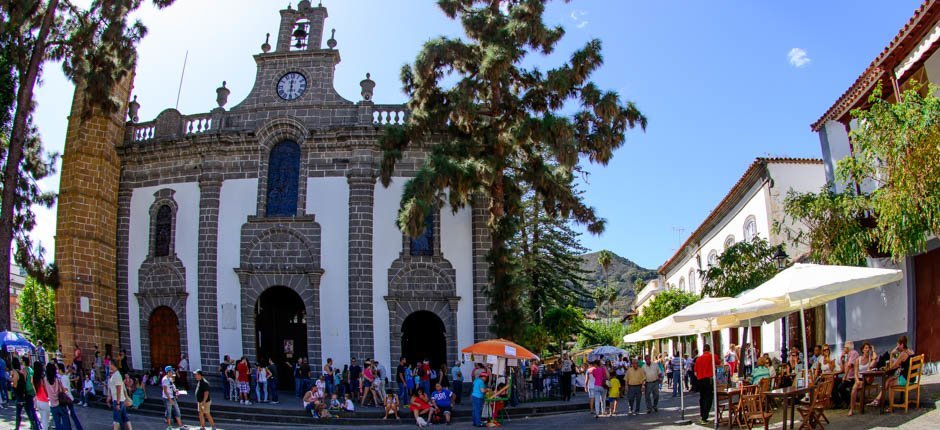 The center of the island is occupied by mountains and picturesque valleys. Narrow roads wind between them, from which there are wonderful views not only of Gran Canaria, but also on the Teide volcano in Tenerife.
The center of the island is occupied by mountains and picturesque valleys. Narrow roads wind between them, from which there are wonderful views not only of Gran Canaria, but also on the Teide volcano in Tenerife.
Terror
Despite the somewhat scary name, distant only 22 km west of the capital of Gran Canaria, the town is considered the most beautiful on the island. Teror is also an important religious center of Gran Canaria - in the place of pine trees, in which a statue of the Virgin Mary was found in the 15th century, now called Our Lady of Pine, a basilica was built, which is the destination of frequent pilgrimages.
The center occupies a square, dominated by the Basilica de La Virgen del Pino – inside is kept a statue of the patron saint of Gran Canaria. The temple dates back to the 18th century. The square is surrounded by pretty eighteenth-century tenement houses – one of them – Casa de los Patrones de la Virgen can be seen from the inside. It is also worth taking a look at the similarly styled Palacio Episcopal, now a community center. The town is full of charming streets filled with traditional buildings decorated with typical Canarian pine balconies.
An important place on the tourist map of the city is Monasterio de Cister at the exit of the town, closed monastery, where you can buy famous cookies baked by nuns. It is also worth going by the road leading from Taror to Valleseco - from Mirador Balcón de Zamora you can see the town.
Information about Teror and its surroundings is available from the tourist office. Many buses go here from Las Palmas de Gran Canaria. There are some good restaurants on site – for a traditional meal, visit La Villa.
The pizzeria El Riticón de Magui is also very popular, however, the best venues – Mirajlor and The Kidnapping – located just outside the city limits. Stay overnight in the beautifully restored 17th-century Casa Rural Doña Margarita or at the J.M.Pino Hotel a kilometer outside of town.
There are also some nice casas rurales in the area.
Away from the beaten track: Accuses
There is a small settlement a few kilometers southwest of Artenara, where you can see still inhabited cave houses. The most beautiful in Acus, however, is the location – on a wide plateau covered with bright green grass.
Artenara
A small village in the middle of the mountains is the place to be, in which it is definitely worth stopping for a moment. While walking through the narrow streets of Artenary, you can see the Iglesia de San Matias from the end of the 19th century. The Parroco Domingo Baez street leads to a small vantage point, where Miguel de Unamuno is pensive and gazing at the beautiful views, or rather his monument, made to commemorate the visit of the famous Spanish poet and philosopher to Gran Canaria in 1910 r. A few hundred meters away you can see restored housing caves, open to the public as an ethnographic museum. The Camino de la Virgen de la Cuevita running above leads to a small chapel carved in the rock - a rostrum is also carved in the rock., pulpit and choir.
The town can be reached from a distance of only 40 km Las Palmas de Gran Canaria bus #202.
Perhaps not the most beautiful works at the church square, but a good restaurant La Casa del Como. In one of the caves there is a tourist information office. An unforgettable experience can be an overnight stay in La Cueuita house carved in the rock.
Tamadaba pine forest
There is a beautiful pine forest to the northwest of Artenara (pinewood), through which the winding road of the GC-210 leads (GC-216 z Artenary). The winding road climbs in height 1400 m n.p.m., from where you can enjoy the view of the Agaete valley and the ocean, the mountainous center of Gran Canaria, and in good weather even the summit of Mount Teide.
On the way back, it is worth going down to the area of two water reservoirs - Presa de los Perez and Presa de los Lugarejos – depending on the location, from which you can watch them and the seasons - they look like they were taken out of the Wild West or green Ireland.